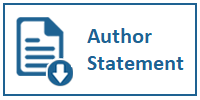Analisis Data Time Series Menggunakan LSTM (Long Short Term Memory) Dan ARIMA (Autocorrelation Integrated Moving Average) Dalam Bahasa Python.
DOI:
https://doi.org/10.31937/si.v9i1.1223Abstract
Abstract ” This study aims to predict time series data by using two methods, the first method commonly used is statistics Autocorrelation Integrated Moving Average (ARIMA model) and the second method which is relatively new, namely machine learning Long Short Term Memory (LSTM). Before the data is processed by both methods, data cleaning and data optimization are carried out. Data optimization is a transformation process to eliminate elements of trends and variations from data. The transformation consists of 7 results of a combination from Log processes, Moving Average (MA), Exponential Weigh Moving Average (EWMA), and Differencing (Diff). The seven processes are each used in the ARIMA and LSTM processes. So that 14 predictions will be obtained (7 from the ARIMA process and 7 from the LSTM process). From the 14 prediction results obtained the smallest RMSE value for ARIMA is 2% and the smallest RMSE value for LSTM is 1%. The results of this study using 7 combinations of transformation processes, can increase the level of accuracy of predictions from ARIMA and LSTM. Where the accuracy of LSTM learning machines by using Telkom's stock data has higher accuracy than ARIMA.
Downloads
Downloads
Published
How to Cite
Issue
Section
License
Authors retain copyright and grant the journal right of first publication with the work simultaneously licensed under a Creative Commons Attribution-ShareAlike International License (CC-BY-SA 4.0) that allows others to share the work with an acknowledgement of the work's authorship and initial publication in this journal.
Authors are able to enter into separate, additional contractual arrangements for the non-exclusive distribution of the journal's published version of the work (e.g., post it to an institutional repository or publish it in a book), with an acknowledgement of its initial publication in this journal.
Copyright without Restrictions
The journal allows the author(s) to hold the copyright without restrictions and will retain publishing rights without restrictions.
The submitted papers are assumed to contain no proprietary material unprotected by patent or patent application; responsibility for technical content and for protection of proprietary material rests solely with the author(s) and their organizations and is not the responsibility of the ULTIMA InfoSys or its Editorial Staff. The main (first/corresponding) author is responsible for ensuring that the article has been seen and approved by all the other authors. It is the responsibility of the author to obtain all necessary copyright release permissions for the use of any copyrighted materials in the manuscript prior to the submission.















